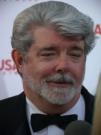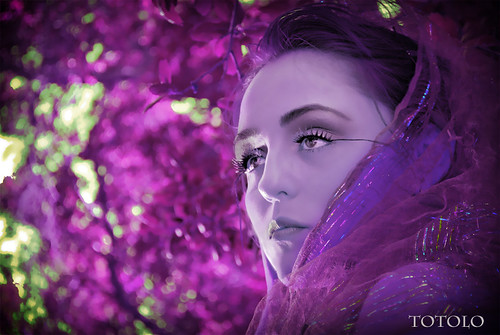
His hair is silver and white, his beard full and his belly round. When he walks into a room a hush falls over the audience as we all settle down.
No, I’m not talking about Santa Claus. Close. I’m talking about George Lucas.
How I ended up in an audience at the Zanuck Theater on the Fox lot last night, enjoying George Lucas discuss his career with the key crew members of “Star Wars”, I’ll never know. But let me be your eyes and ears and relate what it was like to be three feet from the father of Darth Vader.
“Below the Line” sponsored this event. I received an e-mail that said something vaguely about a night honoring the "Star Wars" films with Producer Rick McCallum, VFX Supervisors, etc.
In briefly reading the synopsis I thought I saw George Lucas’ name near the middle of the page. If they were confident George Lucas was going to show up, surely, they would put that on top, so I figured “eh, I’ll check it out".
I arrived at the Fox lot at 6:30pm and waited in the mile long line of cars at the gait where they were checking names and RSVP’s. Curiously, they let me on.
I always assume they’re going to take one look at me and ask me to turn around when I go to studio lots. They have that aura about them to me. Instead they showed me where to park and gave me directions to the Zanuck Theater. Hmmm…
I parked my car and followed the clearly marked signs to the theater. No walking down dead end alleys or wandering into prop design departments, just right up to the theater where there were a few hundred people standing around. "Oh, great." But guess what? Everyone was chatting casually as the WAIT STAFF served Champagne and hors d’oeuvres.
What’s going on here?
So, I get inside, and first let me tell you about the Zanuck Theater if you haven’t seen it. Beautiful. I would estimate that this theater seats no less than 500 hundred people, so, it’s big. The screen is one of those 40 footers that seem to go on forever. Had to be about a dozen speakers on each wall. I actually manage a seat in the 5th row left side aisle, about 30 feet from the stage they have set up where there sit 4 chairs, three on one side and one opposing. Think subject/interview style.
Okay. Theater fills up, Fire Marshal takes a look and they ask everyone not seated to leave, the only bummer of the evening.
Lights go down, a brief yackety yack and up to the podium walks Rick McCallum, as in the Producer of "Star Wars". Pretty frikkin’ cool.
Rick starts right in with the production schedule, says they were shooting 50, (yes 50!), set-ups per day. They moved the camera every 15 minutes (whoa). He pauses briefly to introduce David Tattersall, Director of Photography on the last three ground breaking, digitally shot Star Wars films. David bows and they bring up Rob Coleman, Animation Director and John Knoll, Visual FX Supervisor.
John talks about trying to maintain the quality of the blue screen on set, buying the best material, keeping it tight and getting creative when they moved the camera off the blue screen.
Roger Guyett of “Harry Potter” fame was brought in to Supervise 750 effects shots and John personally oversaw 1,500 FX shots.
Next up on stage, and at this point I’m thinking, “Oh, this is a tribute to the crew, I get it. Forget about Lucas. Damn!”. So next up are Ben Burtt, Film Editor and Sound Designer and Matthew Wood, Supervising Sound Editor and Voice of General Grievous.
It’s interesting to note how these guys have multiple titles. That’s the work model on a Lucas Film. Apparently they feel it’s more organic/creative to have everyone sharing duties.
These guys demonstrated some of the voices and sound effects on stage. It was fun to learn all the laser blasts are guy wire twanks, the opening battle rumble in “Revenge of the Syth” is Niagara Falls, the Speeders are NASCAR race cars, Darth Vader’s heart beat was created by recording the Space Shuttle sonic boom over San Anselmo. Ben Burtt, after playing all the sound FX (including breathing from a mic’ed SCUBA tank for Darth Vader’s breath) said “ We see ourselves as entertainers”, and I saw what he meant and how that was important to the production team for their creativity.
Next we met the Make Up/Creature Supervisor who flew in from New Zealand for 24 hours just for this event and watched a behind the scenes vignette on the development of the make up and creature process. Creature Supervisor (great title): Dave Elsey, Fabrication Supervisor: Lou Elsey, Make Up Supervisor: Nikki Gooley and the great Trisha Bigger who was in charge of creating 1,300 costumes.
Long night, I began wondering if they were going to bring out the transpo captain or the genny operator. I’m kidding this was really a great event and I felt privileged to be there but I was wondering who might be next.
Well it was the master himself…
He of white hair and silvery beard, of round belly and white Reeboks.
George Lucas.
“Four, Five and Six were minimalist, creatively in costume” he begins…
Whoa, whoa, whoa. You’re the creator of Tatooine and Imperial Storm Troopers. Tell me how Yoda got so powerful or what it was like working with Sir Alec Guinness! He’s so humble he just picked up where the moderator left off. They talked in depth about costuming for fifteen minutes.
They bounced around topics pretty rapidly so I’ll break George’s section up into topics, quotes and random facts as they came up in conversation.
On the Digital Pipeline: Sets and extras were too numerous. At one hundred million dollars he had to maximize his investment, says he couldn’t afford a cast of thousands. Many costumes had to be created digitally. Trisha Bigger would select fabrics, which would be replicated digitally. “I shot digitally and had to dumb it down to look like film because it was too sharp, we actually had to place more detail into costumes than ever before”…”The first time costumes were ready was on the day of the shoot, it’s the first time I saw them”, says he saw them in development but not fully realized until day of shooting.
On how “Syth” was different from I and II: “We weren’t designing cameras. We shot the first two weeks of Episode I with a huge prototype camera…Episode II was the learning curve with new gear and servers…Episode III was easy and fun. We pushed it further and further.”
On digital sets: Ep. I = 25%; Ep. II = 50%, Ep. III = 80% digital sets. George would come in so late with new ideas that the paint was drying on sets as they were shooting.
Remember the opera scene? That idea was something George came up with on the fly and the entire set had to be created over night.
On Pre-visualization: On Ep. IV, pre-visualization consisted of out- takes of war footage. Episode III was ENTIRELY pre-visualized. They cut the movie and LIT it before shooting. Instead of storyboards, George could turn on a monitor and watch the scene, which he says he used only for reference and shot whatever he wanted on the day of the shoot.
He’ll Pre-vis about 15 shots in the morning. Pre-vis sends the shots to Editorial and they can put the scene together in the same day with sound.
They spent 6 months developing the pre-vis on the opening battle scene.
First teams to start work on the film are the Design Group and Pre-vis team. They begin as George is still writing. This way he can say “I need this alien and this alien and this car…” A couple months into it ILM takes a look at where they are (A year before shooting) then begin weekly meetings.
Episode III contains 10,000 separate pieces of artwork.
Biggest Challenge as a Director on "Episode III": “It wasn’t that much of a challenge, it was a lot of work. The volcano was a bit of a challenge”.
On Yoda: George likened Yoda’s development from puppet to digital character to the development of the digital camera system: “At first we didn’t get it on Episode I, it wasn’t fully realized until Episode III. It took four years of research.”
On Production: “We re-invented the production paradigm. We changed the production pipeline. Everyone talks to each other.”
Funniest comment of the evening:
On Character voices: “Sometimes it’s brilliant, sometimes it’s something you have to live with”.
They shot on 8 stages, no dailies. They struck sets daily and moved on. Sets are stored in the computer. Sets are shot in 360 degrees at every angle before they are removed in case they need to be re-created digitally a year later.
On 3-D: All six will be released in order I-VI. He is using 3-D as an impetus to push digital projection.
Audience Q and A:
How old is the Emperor? “That’s the first time I was ever asked.” George seems to feel at the time of his death he is around 120.
What kind of Alien is Yoda? There is no answer. “I like him to be a mystery, like the Frog Prince in Snow White”.
On the possibility of Three Trilogies: There were never three trilogies; there was only supposed to be the original Chapter IV. Since he was given $3.5MM he chopped the original screenplay into three chapters equaling three films. Chapter IV was finally made for $10MM.
On his hiatus after the original trilogy: After “Return of the Jedi” he was happy to be done. He wanted to raise his daughter and go to work from 11am to 3pm. He said he was basically retired for 15 years. The prequel was written as a novel, when his kids were grown he decided to take another shot at it since he felt the original got away from his concept of “The Tragedy of Darth Vader”.
On Edit-droid: 1st NLE with video discs, no storage capacity. 9 years later he decided he didn’t want to be in the editing business commercially so he turned his system over to “Light Works” which was a hardware system. He originally approached Sony but they turned him down. They sold Sound (or was it Audio?) Droid to New England Digital and Video Droid to Light works which later went to Avid.
George is working to create a new system which is much simpler than what Avid has become and will be built on the old Editdroid system. “It has to be simple so your mind is on the movie, like an old Kem controller.” No mouse, no keyboard. "All in a hand-thing. No Special Effects, just simple, fast cutting." He’s making it for non-professionals. He feels editing is too complex now.
What was it like to watch all six in order? He meant to do it over Thanksgiving but still hasn’t done it.
And so with that the evening came to a close.
It was really refreshing to be in the company of, perhaps, the most successful filmmaker in the history of cinema, who’s able to remain humble, creative and vital after so many years in an industry not always so kind to it’s greatest pioneers.
Thanks, George!

2 comments:
I think it's great of you, Bill Totolo, to post these Q&A from George Lucas. Hey, it's good to get this info second hand -- I believe that's why the media (e.g. newspapers) are so important.
Post a Comment